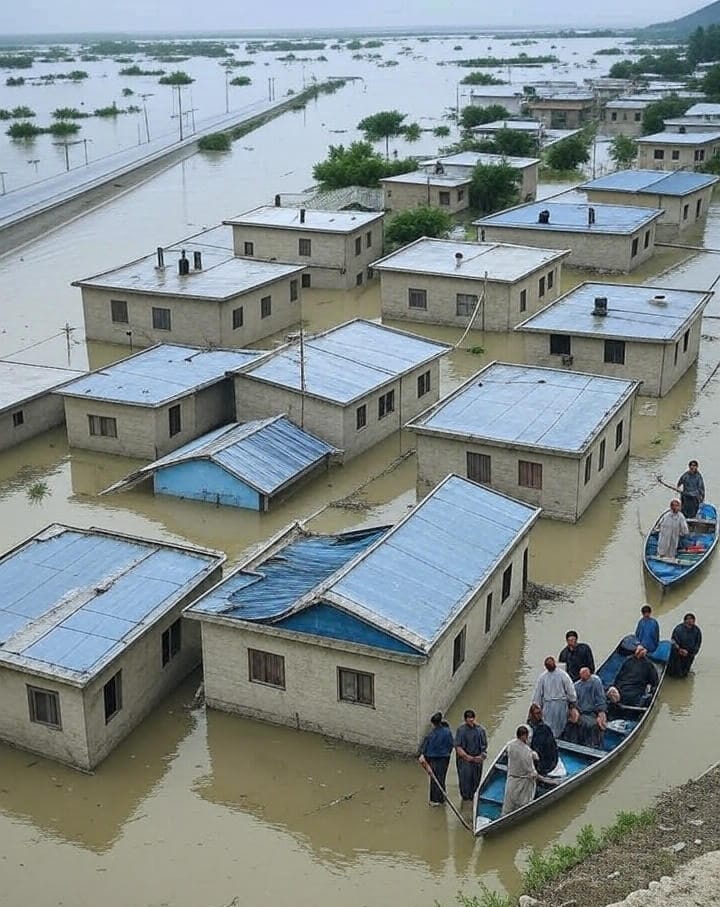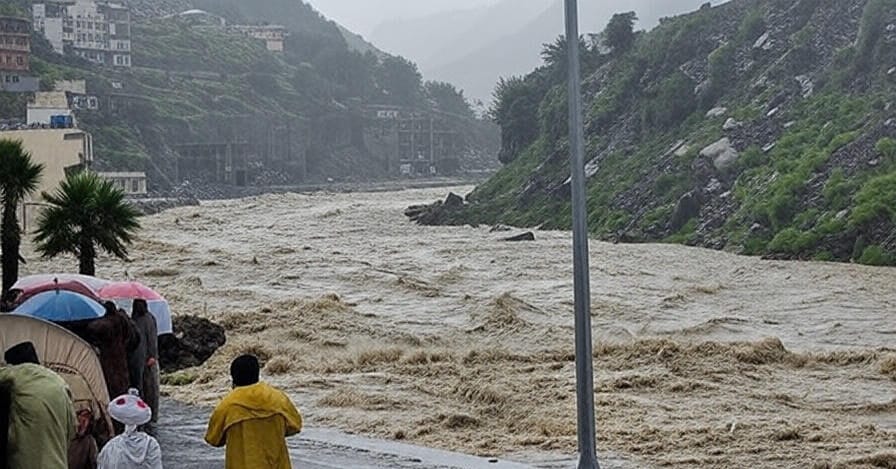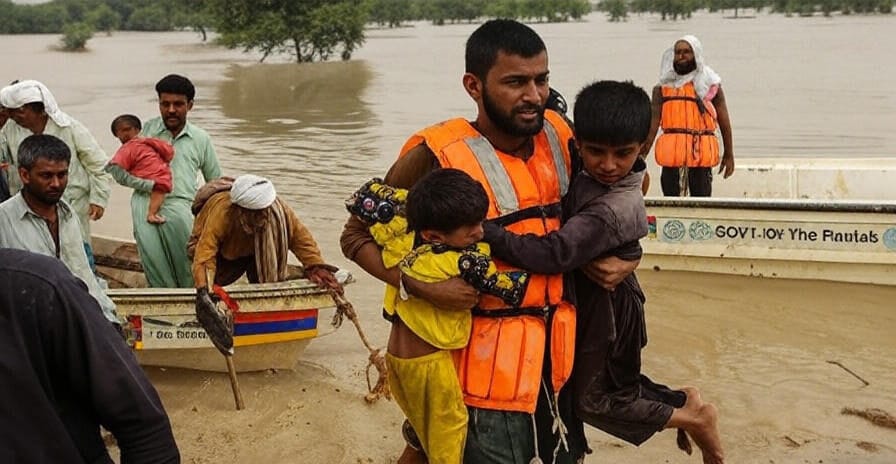
Khyber Pakhtunkhwa (KPK) is reeling from one of its deadliest natural disasters in recent years after relentless monsoon rains triggered catastrophic flash floods and landslides. In just 24 hours, more than 160 people have lost their lives, thousands have been displaced, and vast swathes of infrastructure have been destroyed. Rescue teams are battling extreme weather and damaged roads to reach survivors, but officials warn the death toll could rise sharply in the coming days.
Death Toll and Widespread Destruction
Buner district has recorded the highest number of fatalities, with at least 78 people killed. Entire neighborhoods were swept away as floodwaters surged through homes, markets, and farmland. Other badly affected districts include Bajaur, Battagram, Swat, Shangla, and Chitral.
The situation worsened when a rescue helicopter delivering supplies to remote Battagram villages crashed in poor visibility, killing all five crew members. This setback has delayed aerial relief missions at a time when they are most needed.
Key developments so far:
- Casualties: Over 160 dead in KPK, including 78 in Buner
- Infrastructure loss: Bridges, roads, and communication lines destroyed
- Tourist evacuations: 1,300 people airlifted from Siran Valley
- Rescue setback: Helicopter crash in Battagram killed five personnel
Rescue Operations Under Severe Strain

The Provincial Disaster Management Authority (PDMA) reports that rescue efforts are being hampered by washed-out bridges, blocked mountain passes, and strong water currents. Poor weather conditions have grounded multiple helicopter flights, leaving many remote villages unreachable.
Army units, NDMA teams, and local volunteers are using boats and heavy machinery to evacuate stranded residents. Temporary shelters have been set up in schools, public halls, and relief tents. However, overcrowding, food shortages, and limited access to clean water are raising fears of disease outbreaks, including cholera and dysentery.
Impact Beyond KPK
The floods in KPK are part of a broader monsoon emergency impacting Pakistan and neighboring India. In Gilgit-Baltistan, flash floods have damaged key sections of the Karakoram Highway, cutting off several mountain towns. Across the border, similar extreme weather has brought the combined regional death toll to over 200.
Meteorologists warn that further heavy rainfall could exacerbate the crisis in both countries, with saturated soil increasing the risk of landslides.
Climate Change Driving Extreme Weather
Experts link the increasing frequency and intensity of such floods to climate change. Rising global temperatures are altering monsoon patterns, leading to heavier downpours and faster glacier melt in the north. Pakistan, despite contributing less than 1% of global greenhouse gas emissions, ranks among the most climate-vulnerable nations in the world.
Environmental analysts say the 2025 KPK floods mirror the devastating floods of 2022, which submerged a third of the country and displaced millions. Without stronger infrastructure, flood defenses, and early warning systems, experts warn that Pakistan will continue to face disasters of this scale.
Government and Aid Response

Prime Minister Shehbaz Sharif has expressed deep condolences to the families of the victims and ordered federal and provincial authorities to speed up rescue and relief operations. He has also appealed for international assistance to meet the urgent needs of displaced communities.
Immediate priorities include:
- Emergency shelter for displaced families
- Distribution of food and safe drinking water
- Medical supplies to prevent disease outbreaks
- Long-term investment in flood defense infrastructure
International humanitarian organizations are being urged to send rapid-response teams, supplies, and funding to support ongoing efforts.
The Road Ahead
Weather forecasts suggest that KPK will continue to face heavy rainfall in the coming days, raising fears of further flooding. Authorities have issued evacuation warnings for residents in high-risk areas and are urging people to move to higher ground.
While the immediate focus is on saving lives, recovery will require long-term planning. Experts stress the importance of climate adaptation strategies, including better urban drainage systems, reinforced embankments, and community-based disaster preparedness programs.
For many in KPK, the 2025 floods are not just a natural disaster—they are a stark reminder of the growing threat posed by climate change. The challenge ahead is not only rebuilding homes and infrastructure but also building resilience to withstand the increasingly volatile climate.





